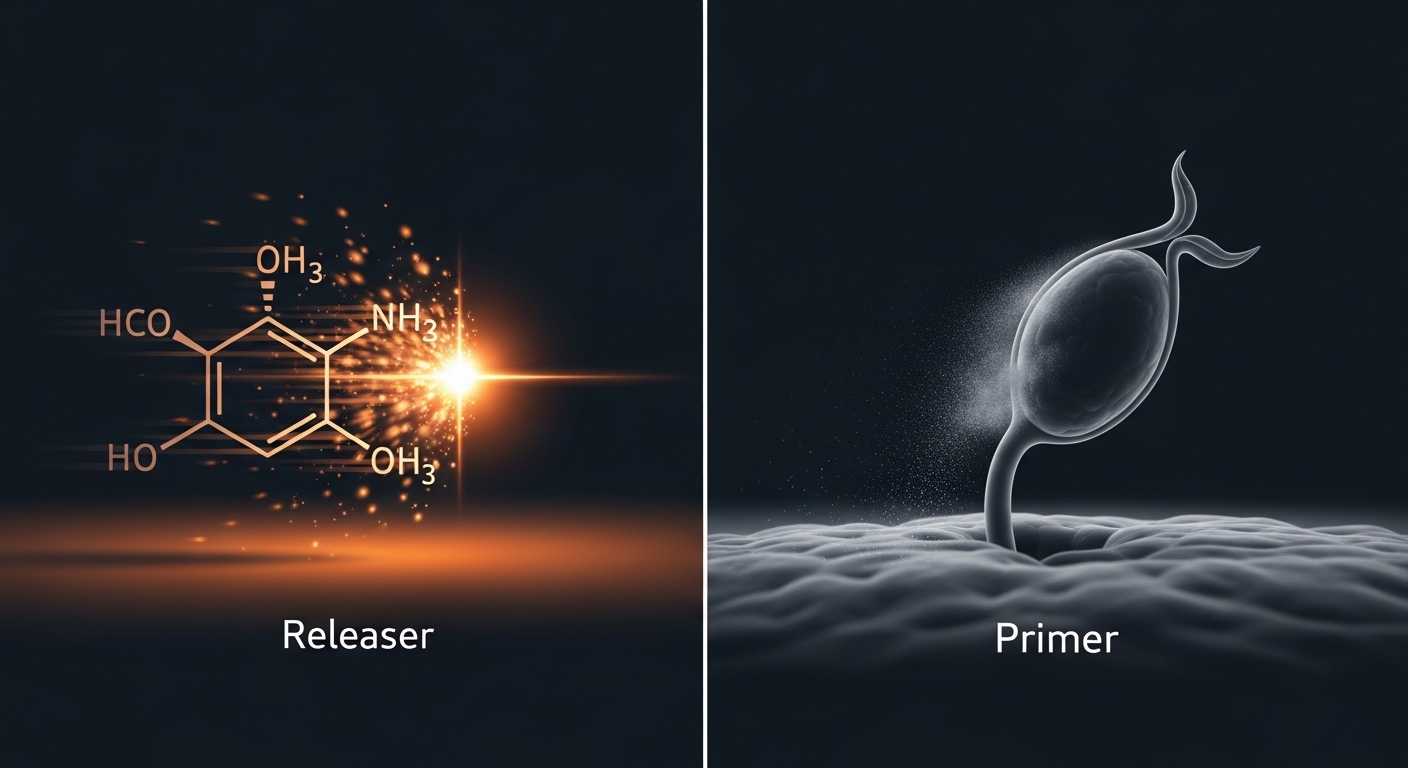Abstract: Pheromones are broadly categorized by the nature and duration of the response they elicit in the receiver. The two primary functional classes are *releaser* pheromones, which trigger immediate and reversible behavioral acts, and *primer* pheromones, which induce slower, long-term physiological and endocrine changes. Understanding this distinction is fundamental to chemical communication science, providing insight into phenomena ranging from insect synchronization to mammalian reproductive control.
Releaser Pheromones: Immediate Action and Behavioral Change
Releaser pheromones are the most well-known type, characterized by their ability to elicit an immediate and rapid behavioral response in the receiving conspecific (Karlson & Lüscher, 1959). The response is often stereotyped and mediated directly through the central nervous system, meaning the chemical directly “releases” a specific action (Wyatt, 2003).
Common examples include:
- Sex Attractants: The powerful, species-specific chemical blends emitted by female moths to attract males from kilometers away.
- Alarm Pheromones: The volatile compounds released by a honeybee’s sting apparatus that trigger aggressive defensive behavior in nestmates.
- Trail Pheromones: The short-lived hydrocarbon deposits left by ants to guide foragers to a food source.
These compounds are typically highly volatile and rapidly degraded, ensuring that the behavioral signal is brief and context-appropriate (e.g., a food trail should fade once the food is gone).
Primer Pheromones: Physiological Change and Delayed Effect
In contrast, primer pheromones function by changing the physiological or endocrine status of the recipient over a period of time, leading to a consequential and often delayed behavioral shift (Karlson & Lüscher, 1959). They are essential for maintaining social homeostasis and coordinating the complex reproductive and developmental cycles within a social group.
Classic examples of primer effects include:
- The Bruce Effect: In mice, the pheromones in a strange male’s urine can cause a recently impregnated female to spontaneously abort her pregnancy (Wyatt, 2003).
- Reproductive Suppression: The **Queen Mandibular Pheromone (QMP)** in honeybees suppresses the ovarian development in worker bees, maintaining the queen’s reproductive monopoly (Katzav-Gozansky, 2011).
- Puberty Acceleration: Pheromones from adult male mice can accelerate the onset of puberty in juvenile females (Vandenbergh, 1969).
Primer pheromones often involve less volatile, larger molecules (such as peptides or proteins) that may be detected by the vomeronasal organ (VNO) in animals and have a more lasting impact on the hormonal axis.
The Overlap: Releaser-Primer Pheromones
While the categorization is useful, many pheromones exhibit dual functionality. For example, QMP not only acts as a primer (suppressing reproduction) but also as a releaser, eliciting immediate behaviors like attracting the worker bees to groom and feed the queen (Katzav-Gozansky, 2011). This overlap highlights the complexity of chemical communication, where a single compound can convey both immediate information and long-term physiological control.
References
Karlson, P., & Lüscher, M. (1959). “Pheromones”: a new term for a class of biologically active substances. *Nature*, 183, 55–56.
Katzav-Gozansky, T. (2011). Primer pheromones in social Hymenoptera. *Annual Review of Entomology*, 56, 423–440.
Vandenbergh, J. G. (1969). Male odor accelerates puberty and affects estrous cycle in female mice. *Endocrinology*, 84(3), 658–660.
Wyatt, T. D. (2003). *Pheromones and Animal Behavior: Communication by Smell and Taste*. Cambridge University Press.


Leave a Reply